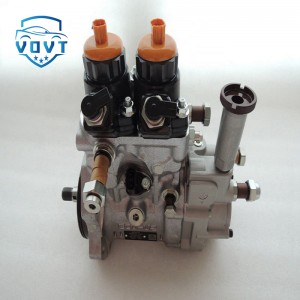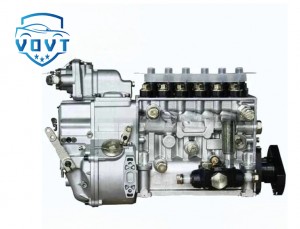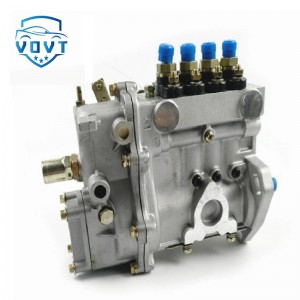High Quality Diesel Fuel Injection Pump 294000-1870 Engine Elements
products description
| Reference Code | 0 460 424 372 |
| MOQ | 1 PCS |
| Certification | ISO9001 |
| Place of Origin | China |
| Packaging | Neutral packing |
| Quality Control | 100% tested before shipment |
| Lead time | 7~15 working days |
| Payment | T/T, Western Union, Money Gram, Paypal, Alipay, Wechat |
Factors affecting the floating characteristics of fuel pump plain bearings
External gear pumps with simple structure, small size, light weight, easy to manufacture and maintain, low price, high efficiency, high power to weight ratio and high reliability, are widely used in aerospace and other fields. The disadvantage is that the gear shaft is always subjected to unbalanced radial force and meshing force, resulting in gear shaft wear, bearing capacity decline; on the other hand, through the oil lead hole introduced into the back of the sliding bearing compensation pressure to ensure that the end face of the sliding bearing is close to the gear end face at the same time, the additional overturning torque is also acted in the sliding bearing, resulting in gears and sliding bearings in the dry friction local operating conditions, resulting in the phenomenon of bias wear, bearing wear further. Bearing wear is further aggravated, and long-term operation will lead to increased leakage and decreased volumetric efficiency.
The floating characteristic of the sliding bearing of the fuel pump direcdy affects the volumetric efficiency of the fuel pump. Theoretical analysis and multi -dimensional batch simulation analysis of the influence of unloading grooves, oil guide holes, load pressure, sliding bearing inner holes, etc. on the floating characteristics of sliding bearings, aiming at the eccentric wear of the sliding bearing of a certain type of fuel pump during the floating process. The results show that the unloading groove and the bore diameter of the sliding bearing have little effect on the floating characteristics of the sliding bearing under different configuration conditions. The location of the oil introduction hole is more appropriate near the pitch circle, and the radius is between 0. 6 ~ 1.2 mm. The data can be used as a theoretical reference for further optimizing the performance of the fuel pump.























